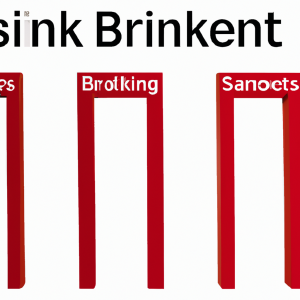
Interpreting Ichimoku Cloud for Effective Trading Strategy
Understanding Ichimoku Cloud Interpretation
Ichimoku Cloud is a technical analysis tool used to identify trends and potential price reversals in the financial markets. It consists of five lines that help traders analyze market conditions and make informed trading decisions. In this article, we will discuss how to interpret the Ichimoku Cloud and use it effectively in your trading strategy.
Components of Ichimoku Cloud
The Ichimoku Cloud consists of five lines, each providing different types of information about the market:
- Tenkan-sen (Conversion Line): This line is calculated by averaging the highest high and lowest low over the past nine periods. It is a short-term indicator of market momentum.
- Kijun-sen (Base Line): This line is calculated by averaging the highest high and lowest low over the past 26 periods. It is a medium-term indicator of market momentum.
- Senkou Span A (Leading Span A): This line is the average of the Tenkan-sen and Kijun-sen, plotted 26 periods ahead. It forms the first boundary of the cloud.
- Senkou Span B (Leading Span B): This line is calculated by averaging the highest high and lowest low over the past 52 periods, plotted 26 periods ahead. It forms the second boundary of the cloud.
- Chikou Span (Lagging Span): This line represents the closing price of the current period, plotted 26 periods back. It helps traders identify potential support and resistance levels.
Interpreting Ichimoku Cloud Signals
Traders can interpret Ichimoku Cloud signals by looking at the relationship between the five lines and the cloud. Here are some common interpretations:
- When the price is above the cloud, it indicates a bullish trend. Traders may look for buying opportunities.
- When the price is below the cloud, it indicates a bearish trend. Traders may look for selling opportunities.
- When the Tenkan-sen crosses above the Kijun-sen, it generates a bullish signal.
- When the Tenkan-sen crosses below the Kijun-sen, it generates a bearish signal.
- When the Senkou Span A is above the Senkou Span B, it indicates a bullish trend. When the Senkou Span A is below the Senkou Span B, it indicates a bearish trend.
Using Ichimoku Cloud in Your Trading Strategy
Traders can use Ichimoku Cloud in conjunction with other technical indicators to confirm signals and make more informed trading decisions. It is important to consider the overall market context and not rely solely on Ichimoku Cloud signals. Additionally, traders should practice risk management and set stop-loss orders to protect their capital.
By understanding how to interpret Ichimoku Cloud signals and incorporating them into your trading strategy, you can improve your trading performance and increase your chances of success in the financial markets.

